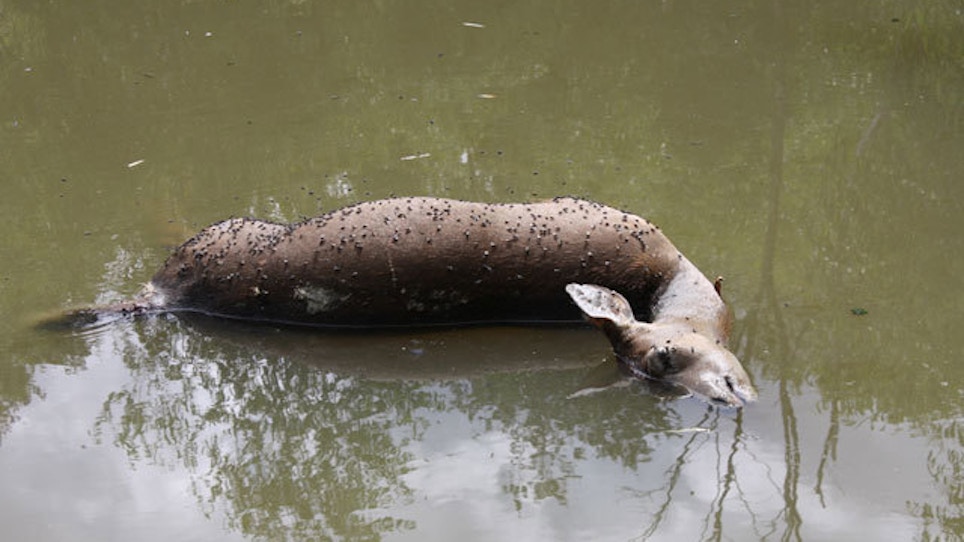Can you imagine being perfectly healthy and happy one day and near death only a few days later, all the cause of a viral infection induced by the bite of a tiny flying insect? Either blue tongue or epizootic hemorrhagic disease (EHD), labeled “antigentically different” by scientists, is grueling demises for whitetails. Symptoms of these similar diseases appear within a week of being bitten — usually in the moist areas of the inner nose or eyelids — by a virus-carrying midge (miniature biting fly). Loss of appetite and weight, weakness, escalated pulse and respiration rates, and fever and hemorrhaging forces the infected animal to water. A swollen tongue, blue in color due to insufficient blood oxygen, will not allow swallowing in the case of blue tongue. Often an infected deer beds down in water to reduce body temperature and pass into a shock-like state, dying within a day or two after the initial symptoms appear.
The transmitter of these two similar diseases, Culicoides variipennis, a biting midge fly 0.5 mm long, lays its eggs in mud or sand on the edge of water. Adults emerge from larvae usually in the hot, dry months of August-September. Though adults live only about a month, the larvae can survive a year, thriving on decaying organic matter in their birthplace.
Ironically, deer are habitually bitten and infected near the very life-giving water they require in dry months. One common myth among deer hunters is that EHD and blue tongue kill more antlered bucks than does and fawns. Studies of infected regions do not substantiate this. In my findings over many years as a hunter and farm owner, just the opposite would seem true. My estimate is that at least three or four does and fawns die of EHD for every antlered buck. Remember, lactating does and growing fawns and yearlings need more water than bucks, therefore they are exposed to the midge carriers more than 3-plus-year-old males. Our farm’s loss during September of 2013 was five does, one fawn and one 2-year-old buck. Very near us a 200-inch-plus buck died of EHD.
Entire bachelor groups that happen to loiter too near a sole water source have been wiped out by these viral infections. This sight is a sad happening for a deer hunter to come upon. It’s these very events that cause the EHD and blue tongue buck myths to propagate. Too, hunters commonly report the findings of a dead buck to state agencies, but overlook the death of does and fawns.






